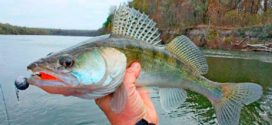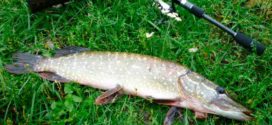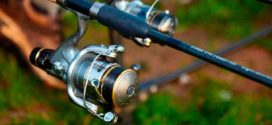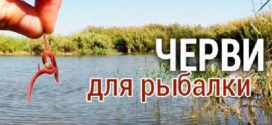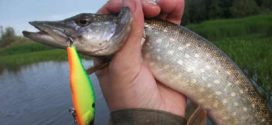During spinning or feeder fishing, when casting tackle on a fishing line, there is a critical impact. At this point, a break may occur. To reduce the likelihood of this event, a shock leader is used for the feeder. This little addition will help with long casts.
Content
Why you need a shock leader
What is a line shock? This is a maximum approximation or short-term increase in the allowable load. The mass of the weight and the rest of the attachment during the arcuate movement of the rod can be critical. It is not advisable to use a thicker cord - it has a large windage, it will be worse to cut through the water. Therefore, an additional cord of a larger diameter is attached to the end of the main fishing line. For this, special nodes are used.
When choosing a shock leader, you need to pay attention to the following parameters:
- The material of manufacture is monofilament, braided line or a specially designed thread. Polymer models are thicker, which increases the windage of the cord. It is recommended to use braid.
- Rated strength. It should be at least 4-5 times larger than the same parameter of the main fishing line. Assume that the cord is designed for a load of up to 3 kg. Then the additional fishing line must withstand a mass of up to 12 kg.
- For carp fishing or feeder fishing, you need a special cone model. It not only provides a proper indicator of strength, but also has the properties of stretching. This is important when fishing for large predatory fish.
You can choose any leader for fishing in color, but it is desirable that it differ in shade from the main cord. This add-on is reusable - knots can always be tied up for installation on another fishing line. But it is not recommended to apply the shock leader more than five times.
Correct coil mounting
Knowing what it is and choosing the right model correctly, you can proceed with the installation. First, the length of the segment is determined. According to some sources, it should be fixed - up to 10 m. But experienced anglers use a different calculation principle - two spinning lengths. This is the maximum length of the fishing line with a strong swing. After overcoming a certain distance, the load drops sharply - you can use the main braid.
After measuring, you need to tie an additional segment according to the following scheme.
- The main line is wound on the reel.
- An additional one is fixed with knots, it unwinds to the end of the rod and from it again to the reel.
- Cut off excess leader.
- Attachment is installed.
Since you can tie the shock leader to the main fishing line directly on the fishing trip, it is recommended to prepare all the components in advance. Beginner fishermen can do these steps at home. This is necessary for skill development. Additionally, you should check the strength of the attachment by making several casts in open areas.
In the video instruction, an experienced angler will explain the nuances of using a shock, clearly shows the stages of tying:
Ways to tie to the main line
The basic rule for knitting shock leader knots is the minimum loop size. It should not cling to the rod rings and artificially reduce the speed of the line when casting. The required reliability of fastening is also ensured. Simple but effective knots have been developed for tying.
Carrot
The shock leader knot got its name from its tapered shape. It has sufficient reliability, is characterized by ease of formation. For a fishing knot, a carrot should be left with about 5 cm of free ends. If you follow the rules of knitting, it will pass well through the rings.
Connection formation steps:
- Two knots are tied at the end of the shock and the fishing line, the distance between them is up to 3 cm.
- The main line makes about 5-7 turns around the leader.
- The same procedure is performed in reverse.
- The end of the fishing line is threaded into the shock loop.
- Wetting the connection and tightening.
The ends are not cut to the base. Small segments, up to 2 cm, will slide on the water surface and increase the casting distance. The carrot knot for the shock leader has one advantage - ease of development.
Albright
This knitting technique is ideal for thin monofilament. The final connection is small, the ends will be directed along the braid. Important - the use of a thick shock will make the knitting procedure laborious.
Order of execution:
- We bend the end of the leader so that a loop forms. The length of the curved end is up to 10 cm.
- We skip the braid at a distance of up to 20 cm.
- We make about ten turns around the shock and the rest of the braid with the main fishing line.
- After that, the remaining end is passed into the loop and five more turns are formed.
- The final tie.
- Wetting and tightening.
This technology can be mastered relatively quickly. It is important to choose the right leader for a particular equipment, calculate its length.
Hello, I am Alexander, the mastermind behind the blog.
In terms of career and free time, I connected my life with the forest. How else, when you live in Karelia! In this blog, I am responsible for the hunting, hiking and equipment sections. Welcome to my world!
 Survival Lessons Tips for the survivalist, fisherman and hunter
Survival Lessons Tips for the survivalist, fisherman and hunter

